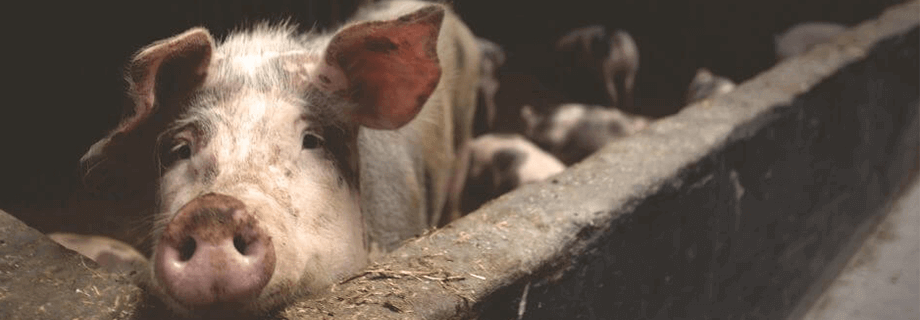Confinement Swine Production in the US – Quality Ingredients Equal Less Waste

I recently watched a segment on the McLaughlin Group, a discussion and debate-style TV program, entitled “A Problem of Poop”. You can see it here (the segment begins at about the 10:42 mark).
The discussion covered concerns about confinement hog farms. How are the vast volumes of waste effectively handled? What happens when they’re not – when nitrogen and phosphorus, in particular, are not contained within the lagoon and end up in rivers and streams? How does this affect people and nature nearby? Should the US EPA increase regulatory oversight of these farms?
The discussion by the panel brought up several points which cannot be ignored, simply because these are not new questions, and fewer and fewer people understand farming. The validity of confinement farming was discussed. Several panel members advocated a vegan lifestyle. I got to the end of the segment thinking that confinement pork production in the US has an image problem, and even more when I read this.
The good news is that there are some straight-forward steps that can be taken to reduce this problem. The amount of nutrients in feces, and the amount of total waste, is directly related to what’s in the pig feed, and how much total feed is consumed. Diet formulation and ingredient selection can help out a lot here.
The use of diet formulation strategies, such as the use of lower-protein diets with synthetic amino acids, to alter the composition of hog waste has received considerable attention (see here).
Also important is the quality of the ingredients in a complete swine diet. Ingredients used to supply protein with higher amino acid digestibilities will result in more nitrogen retention in the pig, and less in waste. As an example, extruded, expelled (ExPress®) soy meal, when processed properly, has higher amino acid digestibilities than commodity, solvent-extracted soybean meal (see here). So, the use of higher-quality ExPress® soy meal means that less of it is necessary in a diet to get the same or better results, and so, more of the amino acids (nitrogen) that go in the pig stay there. In addition, the residual oil in the meal will result in a complete swine diet with an increased total fat content. When diets provide more calories in the form of fat vs. carbohydrates (such as from corn), feed intake is reduced, while feed efficiency is increased (see here). Therefore, if all of the pigs consume less feed, there will be less waste to deal with.
Properly-extruded ExPress® soy meal also has lower levels of phytate phosphorus, which is largely indigestible, and higher levels of better-digested, non-phytate phosphorus (see here). Just like with nitrogen, the use of ExPress ® soy meal will result in less phosphorus excretion in waste.
When farming production practices come under scrutiny, it’s a good idea to be proactive and take steps to be able to explain who you are and what you are doing, including highlighting any changes you’ve made. Simple improvements go a long way – ignoring these issues may mean that you’ll be forced to change.
Contact Dr. Nabil Said or me, Dr. Dave Albin to discuss specific dietary needs and to learn more about ExPress® soy meal.



